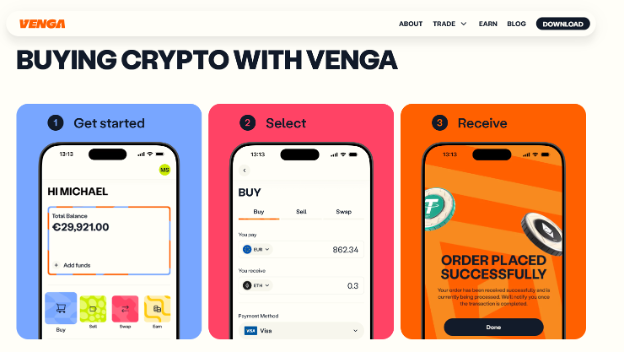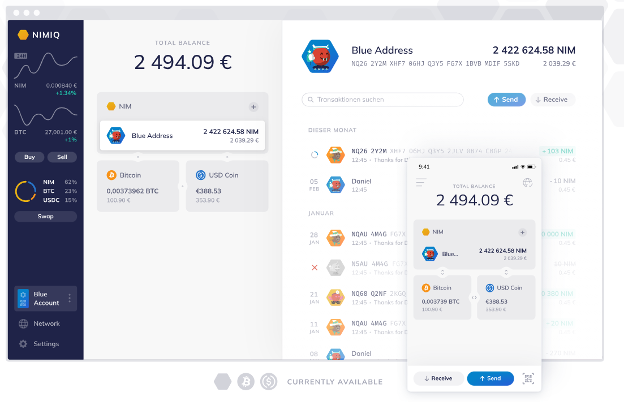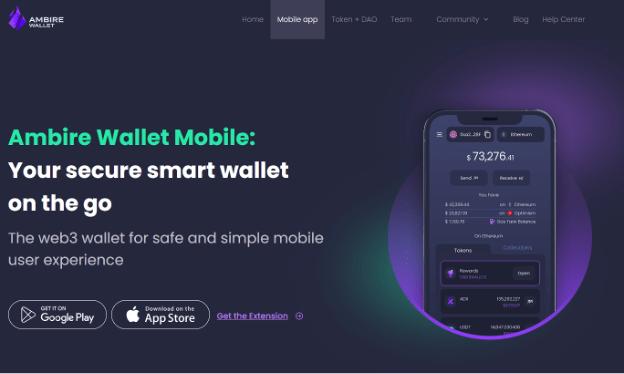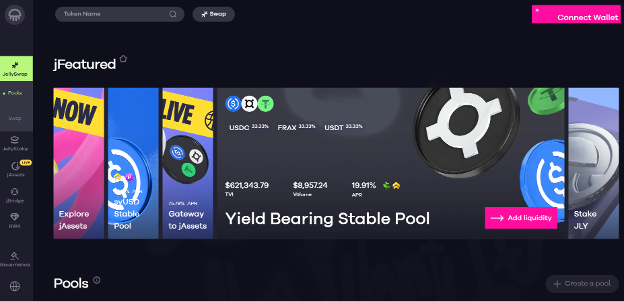Reason to trust

How Our News is Made
Strict editorial policy that focuses on accuracy, relevance, and impartiality
Ad discliamer
Morbi pretium leo et nisl aliquam mollis. Quisque arcu lorem, ultricies quis pellentesque nec, ullamcorper eu odio.
Traditional banks, hedge funds and stocks and shares are slowly being edged out by a new, more dynamic financial ecosystem that’s founded on blockchains. We’re talking about decentralized finance, an entirely new approach to banking and money management that lives outside of the traditional financial world.
The implications of DeFi, which leverages blockchain to give users unprecedented control over their finances, are vast, paving the way for a new generation of innovative financial products. These include decentralized, peer-to-peer exchanges where users can trade assets directly, lending platforms where anyone can borrow funds or earn interest by loaning them, as well as tokenized real-world assets, yield farming and stablecoins.
These decentralized applications represent the future of finance, where wealth is counted not in fiat currency, but in digital assets. Bypassing traditional barriers to entry such as credit checks, economic status and geographic location, DeFi promises financial inclusion and opportunity on a truly global scale.
1. Nexo

Nexo recently announced its transformation from a pioneering crypto lending application to a comprehensive and compliant platform for managing digital assets and growing wealth.
Unlike other crypto applications, Nexo believes in a future where digital assets will co-exist with fiat money – at least for the foreseeable future – which explains its focus on CeDeFi, or the intersection of crypto and traditional money. Thus, it allows users to manage both fiat and crypto in a single, unified platform.
Nexo originally began life as a crypto lending platform, and is credited with pioneering the concept of decentralized loans. It still supports that functionality and boasts one of the largest crypto lending markets around, with users able to borrow various digital assets at competitive rates, using either crypto or fiat as collateral, without any credit checks.
However, it also provides various tools for managing and growing your wealth, with opportunities to trade and swap digital assets, buy and sell tokenized assets, staking and more. Its native cryptocurrency NEXO serves as a loyalty token, giving customers cashback, superior rates and discounts, among other benefits, and it also supports crypto payments through the Nexo Card, allowing users to spend Bitcoin and other assets in real-world stores.
The other strength of Nexo is its role as an on-ramp. Because users can manage and deposit fiat currencies including U.S. dollars, euros and U.K. pounds in the same wallet, they can easily swap those assets for hundreds of different crypto assets.
2. Venga

Barcelona-based Venga has set its sights on making digital assets and DeFi accessible to the masses with its user-friendly, all-in-one application that makes it simple to navigate everything the crypto world has to offer.
It launched its app last year, but unlike your typical, confusing crypto wallet, it wraps the crypto experience into a UI that looks and feels much more like a mainstream financial app, with a focus on seamless navigation and simplified onboarding.
The name Venga means “Let’s go” in Spanish – appropriate for an app that aims to onboard millions of new users into crypto and help them explore the wider opportunities available in DeFi. To begin with, Venga focuses on the essentials, offering seamless tools for buying, selling, and trading crypto directly within the app. Once users acquire their first assets, Venga also simplifies the process of exploring DeFi opportunities and earning possibilities. The app’s built-in exchange feature is already live, and the team is actively working on integrating real-world assets (RWA) into the platform, as well as additional blockchain innovative products. While the specifics of this integration haven’t been publicly announced yet, it marks an exciting step toward expanding Venga’s ecosystem.
The startup recently revealed it has applied to obtain a Markets in Crypto-Assets or MiCA license, which is a key step towards becoming fully compliant in the European Union.
3. Nimiq

An ideal tool for anyone who wants to ditch fiat currency, Nimiq has created a rapid, low-cost and easy-to-use crypto payments network that has expanded to an incredible 29,000 locations globally.
Its blockchain-based payments are facilitated by a blazing-fast protocol that can support over 1,000 transactions per second, and it’s backed by a number of essential products including the Nimiq Wallet. As a browser-based wallet, it can run on any device, enabling users to manage and make payments wherever they might be. It spans the worlds of decentralized and traditional finance through its SuperSimpleSwap service, which enables quick fiat-to-crypto and crypto-to-fiat transactions. All users have is to create a wallet – a process that takes just 20 seconds – and they can buy and sell a range of cryptocurrencies with minimal fuss.
Another cool, merchant-focused product is Cryptopayment.link, enabling stores to easily accept crypto payments and be paid in either digital assets or fiat, whatever they prefer.
It also provides access to a number of DeFi-based yield-generating opportunities, with users able to stake NIM tokens and earn a generous 15% APY for supporting its payment network. Moreover, it has launched a hugely successful outreach program called Nimiq Cities to promote crypto adoption among businesses worldwide.
4. Ambire Wallet

Few crypto wallets are quite like Ambire Wallet, which aims to simplify the crypto experience to such an extent that you won’t even realize you’re using the blockchain, while simultaneously rewarding its users, just for using it.
It was created by the same team behind the blockchain-based advertising platform AdEx, and it’s notable for its account abstraction features that mask the complexities of traditional crypto wallets. In a nutshell, users can sign up and create a wallet using a traditional email and password login combo, without ever having to create or write down and try to keep an annoying seed phrase safe and secure. This makes it a great option for newcomers, but that’s far from the only reason to use Ambire.
Another novel feature is Meta Transactions, which allows users to bundle multiple actions into a single transaction so they can perform complex DeFi transactions in one go, saving on gas fees while eliminating the complex approvals process. Users can save additional gas thanks to its innovative Gas Tank feature, which allows these fees to be paid in advance, using any token they desire.
DeFi enthusiasts are catered to with Ambire’s comprehensive dApp catalog and its integrated blockchain bridge, which allows for cross-chain transactions. Ambire bills itself as the first chain-agnostic smart contract wallet, with users able to retain the same wallet address no matter what network they’re using.
Unlike most other crypto wallets, Ambire is a fully decentralized project that’s run by a decentralized autonomous organization or DAO. This means users can vote on proposed changes and new features, with the weight of their vote measured by how many WALLET tokens they hold. Moreover, Ambire famous rewards users simply for using the app, doling out WALLET tokens on a regular basis – the more funds you have in your wallet, the more tokens you’ll receive.
5. Jellyverse

Tokenized real-world assets promise to transform financial markets by making them more liquid and accessible, and this is precisely where Jelly Labs, creator of the Jellyverse dApp, is making its presence felt.
It has built a decentralized marketplace for tokenized assets that’s built atop of the DeFiMetaChain, a Layer-2 network that lives on Ethereum and connects to multiple data sources to create a reliable price feed for various those assets.
Jellyverse’s tokenized assets are known as “jAssets”, and they represent real-world assets including stocks, bonds and commodities, which users can buy and sell to their heart’s content. In this way, it enables indirect participation in traditional financial markets, increasing accessibility to those investments. Its native token JLY sits at the heart of this marketplace, enabling users to buy and sell these tokenized assets. Users can also stake JLY on JellyStake to earn a share of the transaction fees on JellySwap, its decentralized exchange platform.
Other products include jUSD, a stablecoin, and JellyBond, which brings the first bonding mechanism to the DeFiChain to amplify yield for JLY token holders.
Image: Depositphotos






















